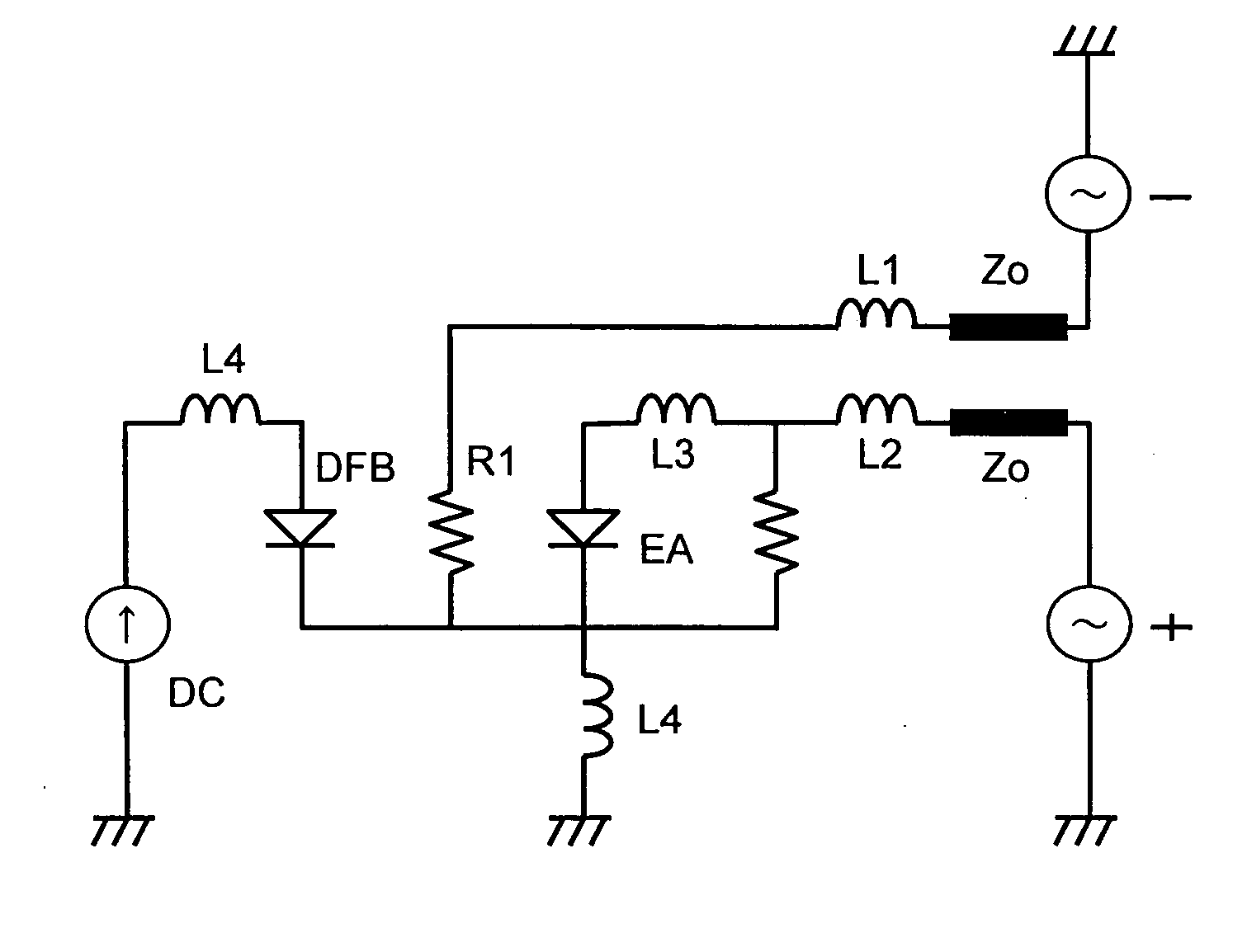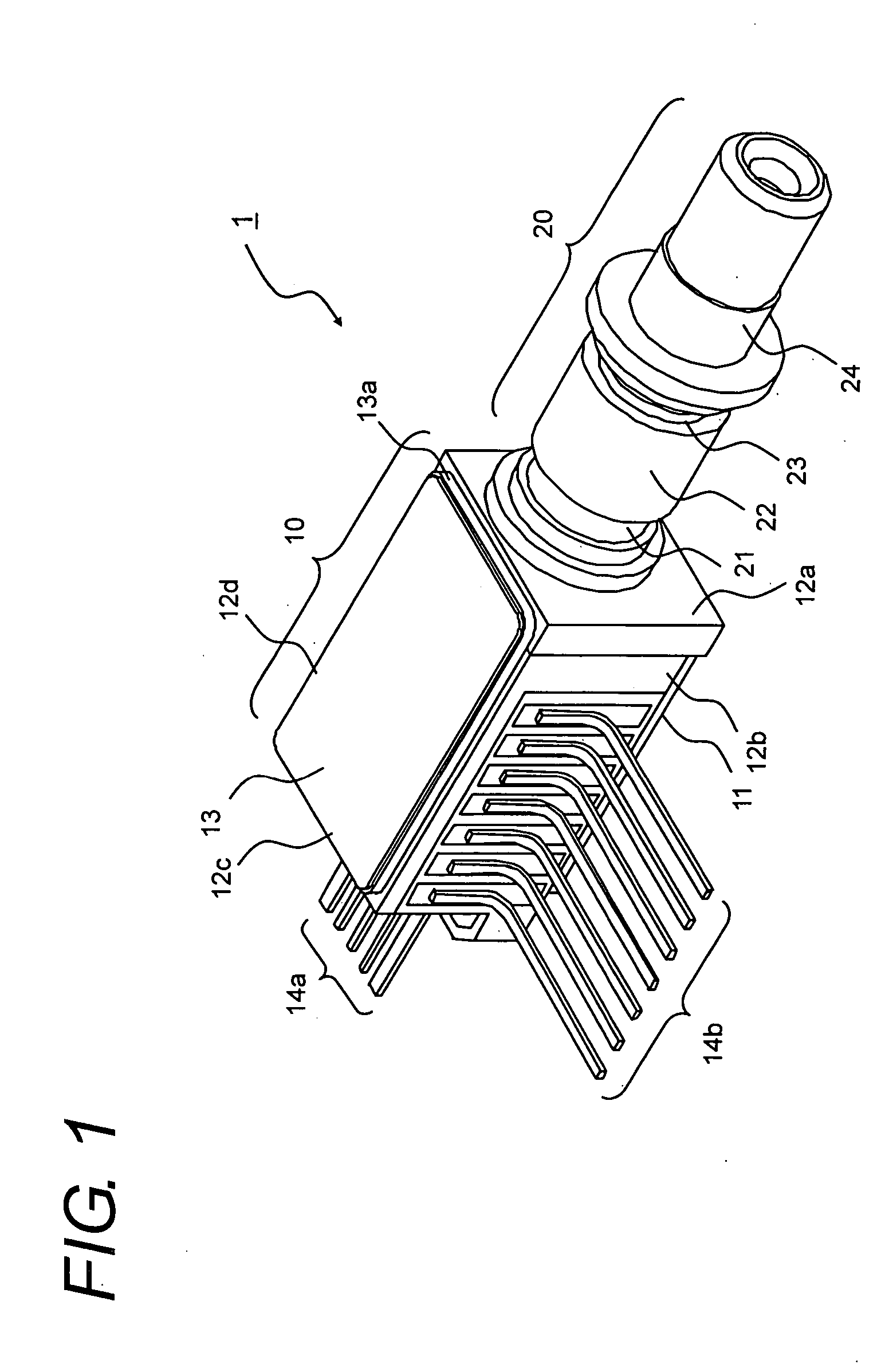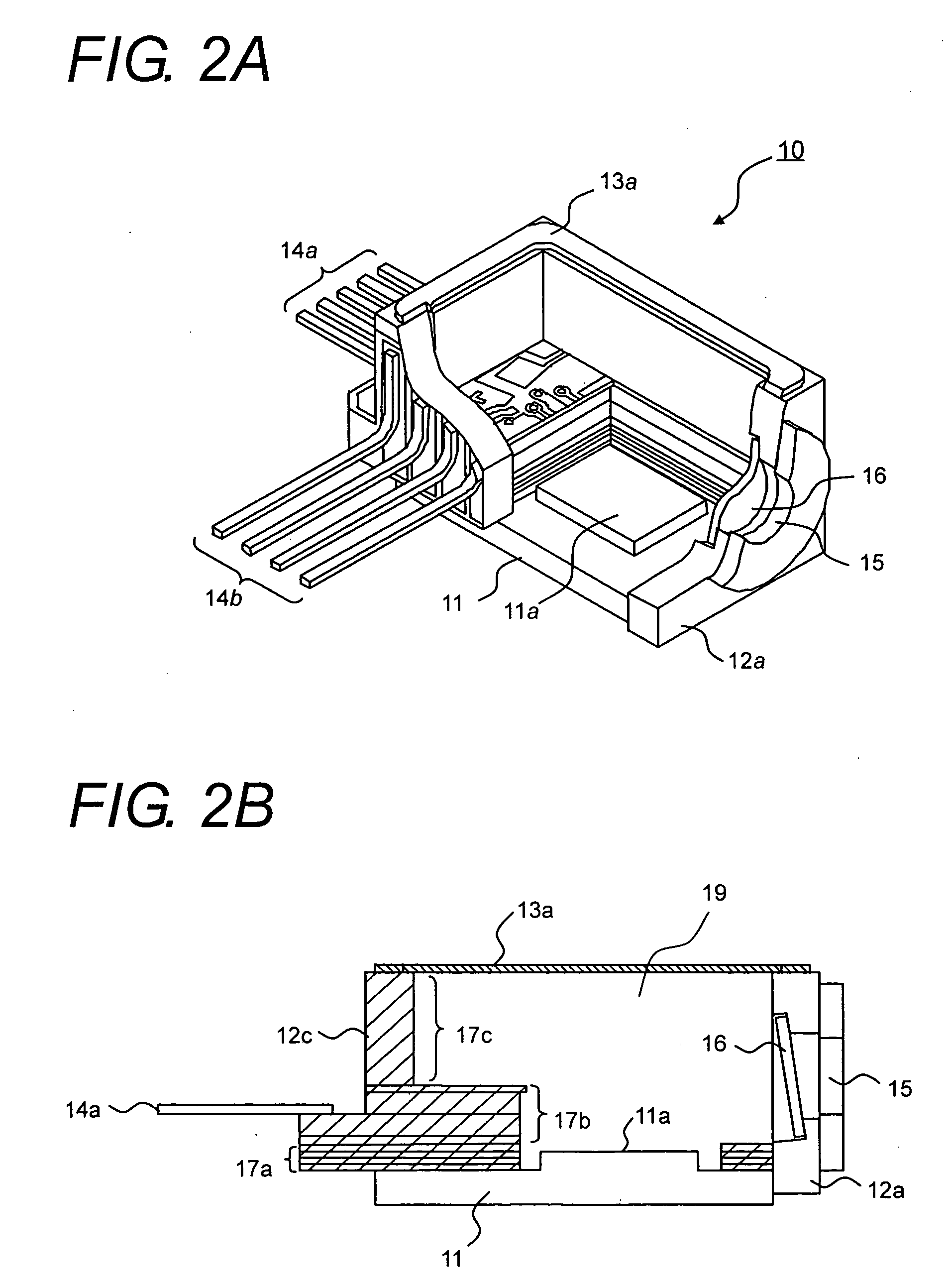Method for manufacturing a transmitting optical sub-assembly with a thermo-electric cooler therein
a technology of thermo-electric cooler and transmitting optical sub-assembly, which is applied in the direction of semiconductor lasers, semiconductor/solid-state device testing/measurement, instruments, etc., can solve the problems of limiting the limiting the cooling capacity of the thermo-electric cooler, and increasing the power consumption of the semiconductor device to operate in stable high-speed signal operation
- Summary
- Abstract
- Description
- Claims
- Application Information
AI Technical Summary
Benefits of technology
Problems solved by technology
Method used
Image
Examples
Embodiment Construction
[0037]FIG. 1 illustrates an external appearance of the optical transmitting assembly of the present invention.
[0038] The optical transmitting assembly includes a box-shaped package 10 and an optical coupling portion 20 attached to one side wall 12a of the package 10. The package 10 has, so called, a butterfly shape with a bottom 11, four side walls 12a to 12d disposed on the bottom 11, and a ceiling 13. One side wall 12a provides the optical coupling portion 20. The other side wall 12c opposite to this side wall 12a arranges lead pins 14a. These lead pins 14a are to provide a high-frequency modulation signal to a semiconductor optical device installed within the optical transmitting assembly. Further, in the third wall 12b intersecting the first wall 12a and the second wall 12c facing the first wall 12a also arranges a plurality of lead pins 14b, through which DC signals or low frequency signals, such as the electric power to an thermoelectric cooler, an output from a temperature s...
PUM
 Login to View More
Login to View More Abstract
Description
Claims
Application Information
 Login to View More
Login to View More - R&D
- Intellectual Property
- Life Sciences
- Materials
- Tech Scout
- Unparalleled Data Quality
- Higher Quality Content
- 60% Fewer Hallucinations
Browse by: Latest US Patents, China's latest patents, Technical Efficacy Thesaurus, Application Domain, Technology Topic, Popular Technical Reports.
© 2025 PatSnap. All rights reserved.Legal|Privacy policy|Modern Slavery Act Transparency Statement|Sitemap|About US| Contact US: help@patsnap.com



